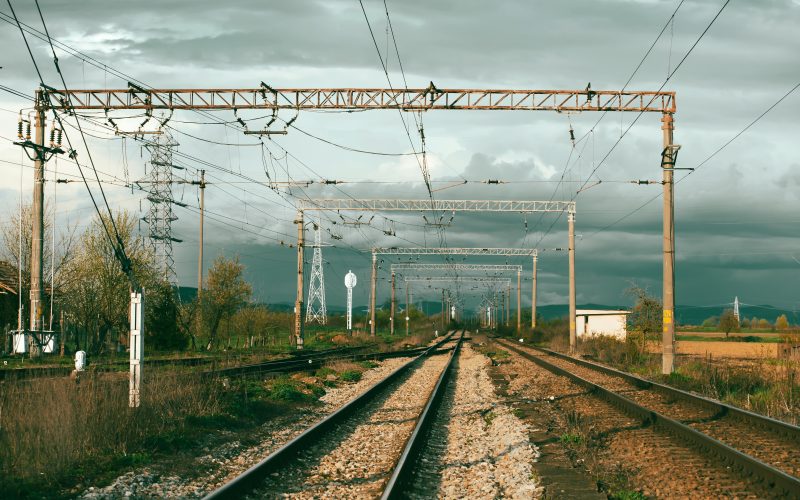In the 21st-century global economy, connectivity is currency. Countries that can offer the shortest, safest, and most efficient trade routes become not just economic hubs, but strategic influencers. Pakistan, long considered a geopolitical pivot, is now poised to become a geoeconomic bridge — connecting South Asia, Central Asia, the Middle East, and beyond. Through ambitious infrastructure projects, multilateral trade agreements, and strategic partnerships, Pakistan is transforming itself into a strategic transit trade network linking continents.
Geostrategic Location: Pakistan’s Inherited Advantage
Pakistan’s geography is its greatest asset. It borders India, China, Afghanistan, and Iran, while facing the Arabian Sea to the south. This allows it to act as a land bridge and a maritime gateway connecting:
-
Central Asia to the Arabian Sea
-
China to the Middle East and Africa
-
South Asia to Western markets via sea routes
This unique position allows Pakistan to function as a transit and logistics hub, facilitating trade across multiple regions with growing demand for market access.
China-Pakistan Economic Corridor (CPEC): The Core Connector
At the heart of Pakistan’s trade ambitions is the China-Pakistan Economic Corridor (CPEC) — a flagship project under China’s Belt and Road Initiative (BRI). CPEC links Kashgar in Western China to Gwadar Port in Balochistan, offering China the shortest trade route to the Arabian Sea and enabling Pakistan to act as a conduit for global commerce.
CPEC includes:
-
Highways and Expressways: Like the M-14 Motorway and Eastern Route
-
Railway upgrades: Enhancing the ML-1 track for freight efficiency
-
Special Economic Zones (SEZs): Designed to attract investment and manufacturing
-
Energy projects: Powering industrial and logistics activity
Together, these developments elevate Pakistan’s logistics infrastructure and integrate it into regional and intercontinental supply chains.
Gwadar Port: A Rising Maritime Trade Gateway
The strategic Gwadar Port is central to Pakistan’s vision for intercontinental connectivity. Located just 600 km from the Strait of Hormuz, a critical global oil transit chokepoint, Gwadar offers a direct link to the Middle East, Africa, and European markets.
Key aspects of Gwadar’s potential:
-
Serves landlocked countries like Afghanistan, Turkmenistan, and Uzbekistan
-
Competes regionally with Chabahar Port in Iran and ports in the UAE
-
Designed for bulk cargo, container handling, and future oil refineries
As Gwadar’s infrastructure matures, it is expected to become a transshipment hub not only for China but also for Central Asian and Gulf countries looking for efficient trade corridors.
Transit Trade Agreements: Building Regional Bridges
To fully operationalize its role as a transit hub, Pakistan has signed or participated in several multilateral and bilateral trade agreements:
1. Afghanistan-Pakistan Transit Trade Agreement (APTTA):
Allows Afghan goods to pass through Pakistani ports. Pakistan is also in discussions to extend similar access to Central Asian Republics (CARs).
2. Quadrilateral Traffic in Transit Agreement (QTTA):
Signed with China, Kazakhstan, and Kyrgyzstan, this agreement bypasses Afghanistan and provides alternate routes for trade.
3. TIR Convention (International Road Transport):
Pakistan’s accession enables seamless cross-border cargo movement with standardized customs procedures. Under this, NLC successfully transported goods to Uzbekistan and Kazakhstan, marking a milestone in regional connectivity.
Digital Trade and Logistics Modernization
Physical infrastructure must be complemented by digital trade facilitation. Pakistan is advancing rapidly in this area:
-
Pakistan Single Window (PSW): An integrated digital system that reduces clearance times and simplifies customs procedures.
-
End-to-end tracking: Logistics operators like NLC now offer digital platforms for cargo tracking, documentation, and payment.
-
Border terminals modernization: Custom posts at Torkham, Chaman, and Khunjerab are being upgraded for rapid transit.
These digital advancements make Pakistan a more attractive route for international traders seeking speed, transparency, and reliability.
Benefits for Pakistan and the Region
1. Economic Diversification:
Transit trade enables Pakistan to earn revenue from logistics, handling, and service sectors, reducing dependence on textile or agrarian exports.
2. Employment and Development:
Infrastructure projects generate jobs, improve connectivity in underdeveloped areas, and stimulate local economies, especially in Balochistan and Khyber Pakhtunkhwa.
3. Geopolitical Leverage:
By becoming essential to regional supply chains, Pakistan gains strategic clout and diplomatic leverage in South and Central Asia.
4. Private Sector Growth:
Freight forwarders, customs agents, warehousing services, and digital logistics startups can flourish as demand for trade facilitation grows.
Challenges on the Road Ahead
Despite the progress, several barriers must be addressed:
-
Security Concerns: Ensuring safe passage of goods through volatile areas remains critical.
-
Regional Tensions: Political instability in Afghanistan or strained India-Pakistan relations can limit trade potential.
-
Bureaucratic Delays: Red tape at customs and overlapping regulations hinder speed.
-
Infrastructure Gaps: Integration of rail, road, and maritime infrastructure remains a work in progress.
Resolving these challenges requires consistent policymaking, regional diplomacy, and institutional reforms.
The Future of Continental Connectivity
Pakistan’s trade corridors are not limited to Asia. Visionary projects such as the Middle Corridor (linking China, Pakistan, Turkey, and Europe) and railway networks into Iran and Turkey could allow for intercontinental rail freight stretching all the way to Europe. Additionally, trade routes connecting to Africa via Gwadar can open up entirely new markets.
As regional organizations like ECO (Economic Cooperation Organization) and SCO (Shanghai Cooperation Organization) grow in influence, Pakistan’s role as a transit facilitator will become increasingly important.
Conclusion
Pakistan is no longer just a transit route — it is evolving into a regional trade integrator and continental connector. Through robust infrastructure like CPEC, ports like Gwadar, and strategic policies such as the TIR system and APTTA, Pakistan is charting a course toward becoming a central artery of intercontinental trade. By bridging East and West, North and South, Pakistan is truly connecting continents — and shaping the future of regional trade dynamics.












